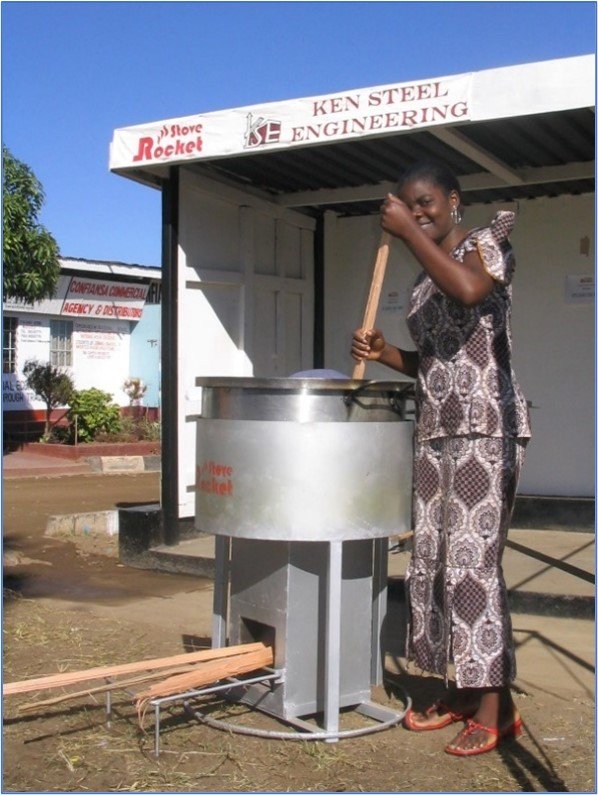Institutional Cookstoves: New International Testing Standards
Published February 21, 2024

People worldwide depend on inefficient solid-fuel-burning stoves, which often rely on solid fuels such as wood, charcoal, coal, crop wastes, and animal dung. Bigger versions of these stoves are used institutional settings like schools, restaurants, clinics, hospitals, and displaced-person camps to cook large quantities of food and pasteurize drinking water. Specialized institutional stoves sterilize medical equipment, process products (such as coconut oil and shea butter), smoke fish, and are operated for other commercial tasks. These larger stoves typically have firepower greater than 10 kilowatts and/or a cooking vessel volume greater than 25 liters (more than 6.6 gallons). However, until recently, no standards existed to ensure that the stoves worked correctly, efficiently, and cleanly.
Unhealthy and unsafe stoves are harmful to personal and community public health, the local environment, and the world’s climate. Air pollution directly affects the health of the people using the stoves, and smoke from millions of stoves worldwide contributes to outdoor air pollution that affects everyone’s health.
EPA works with other U.S. government agencies, the Clean Cooking Alliance, and numerous other international partners to protect human health and the environment by expanding access to cleaner stoves and fuels. One of the many approaches to this work is through the development of international standards for testing stoves for fuel efficiency, air pollution emissions, safety, and durability. EPA has provided leadership and scientific data to help develop standards through ISO (International Organization for Standardization).
“International standards serve as valuable reference points for governments to enact policies to protect health and the environment, provide incentives for stove developers to improve technology, and furnish information to consumers,” said EPA scientist Jim Jetter.
Jetter worked closely with EPA’s John Mitchell, Chair of the U.S. Technical Advisory Group to ISO, and the ISO working group to develop a 2018 standard for testing household cookstoves. An updated ISO standard for testing institutional cookstoves was published in 2023 by a working group led by Jetter. The working group, which included 47 members from eight countries and two liaison organizations, published the institutional cookstoves standard after a four-year process. The testing methods evaluate the energy performance, emissions, safety and durability of institutional cookstoves. Based on best practices, the new standard provides testing methods that will ensure cleaner, safer large cookstoves used in many institutional settings.
The working group will next begin the ISO five-year systematic review of the standard for smaller, household cookstoves.
Read more:
- Clean cookstoves and clean cooking solutions: Test protocols for institutional cookstoves
- Household Energy and Clean Air
- Household Energy and Clean Cookstove Research
- Module 3: Guidance on standards and testing
This article was written by EPA's Melissa Payne.
